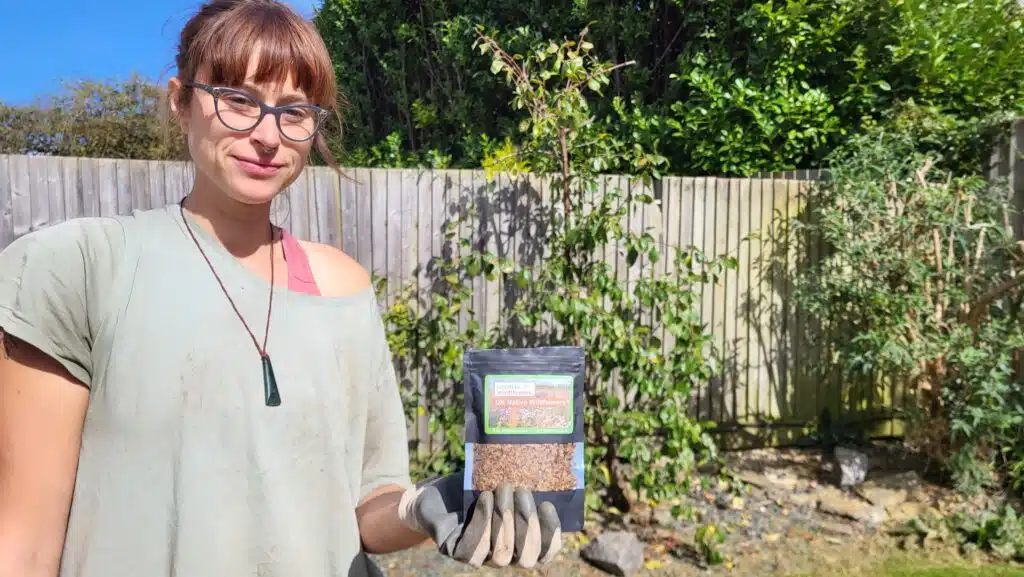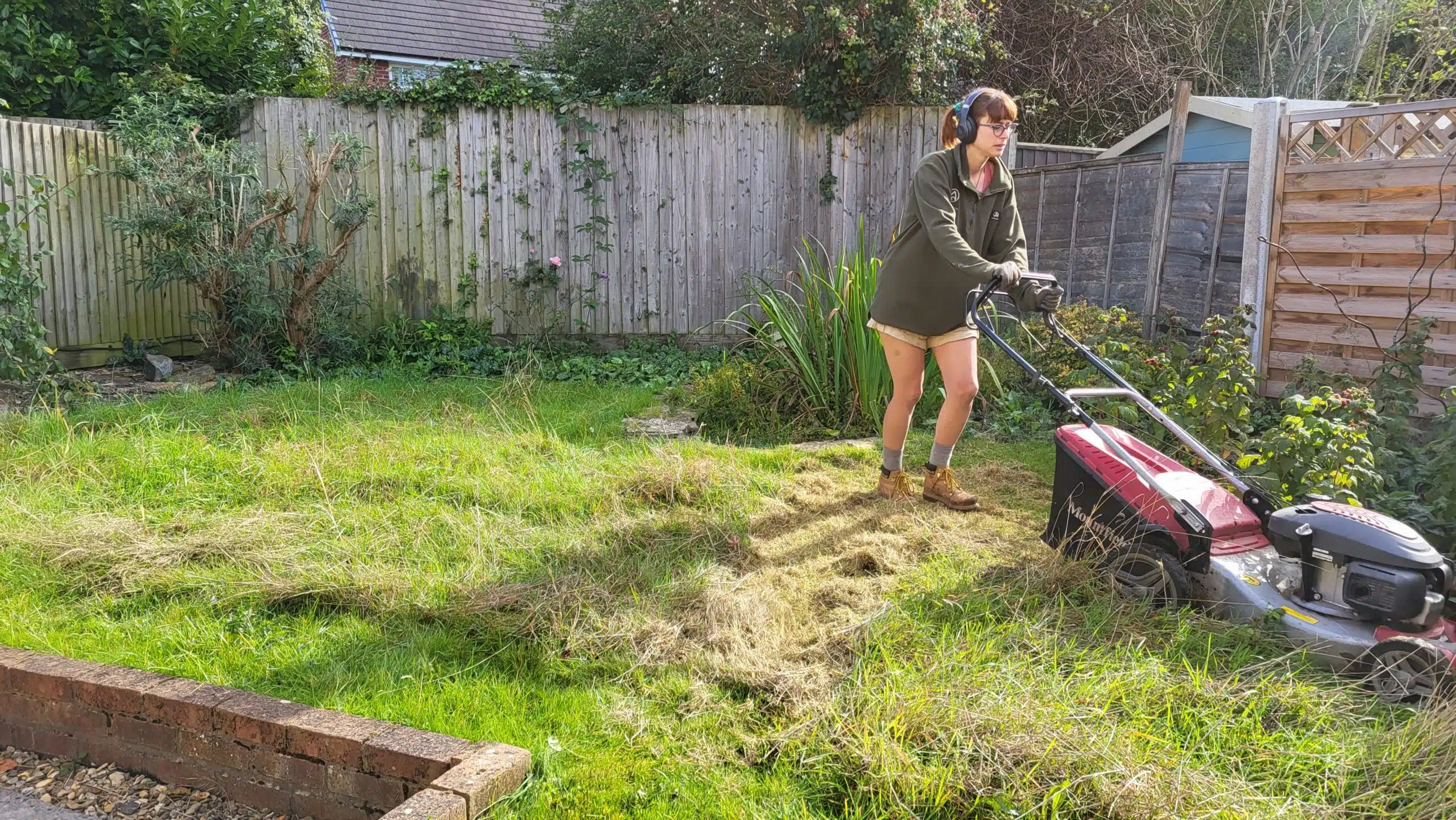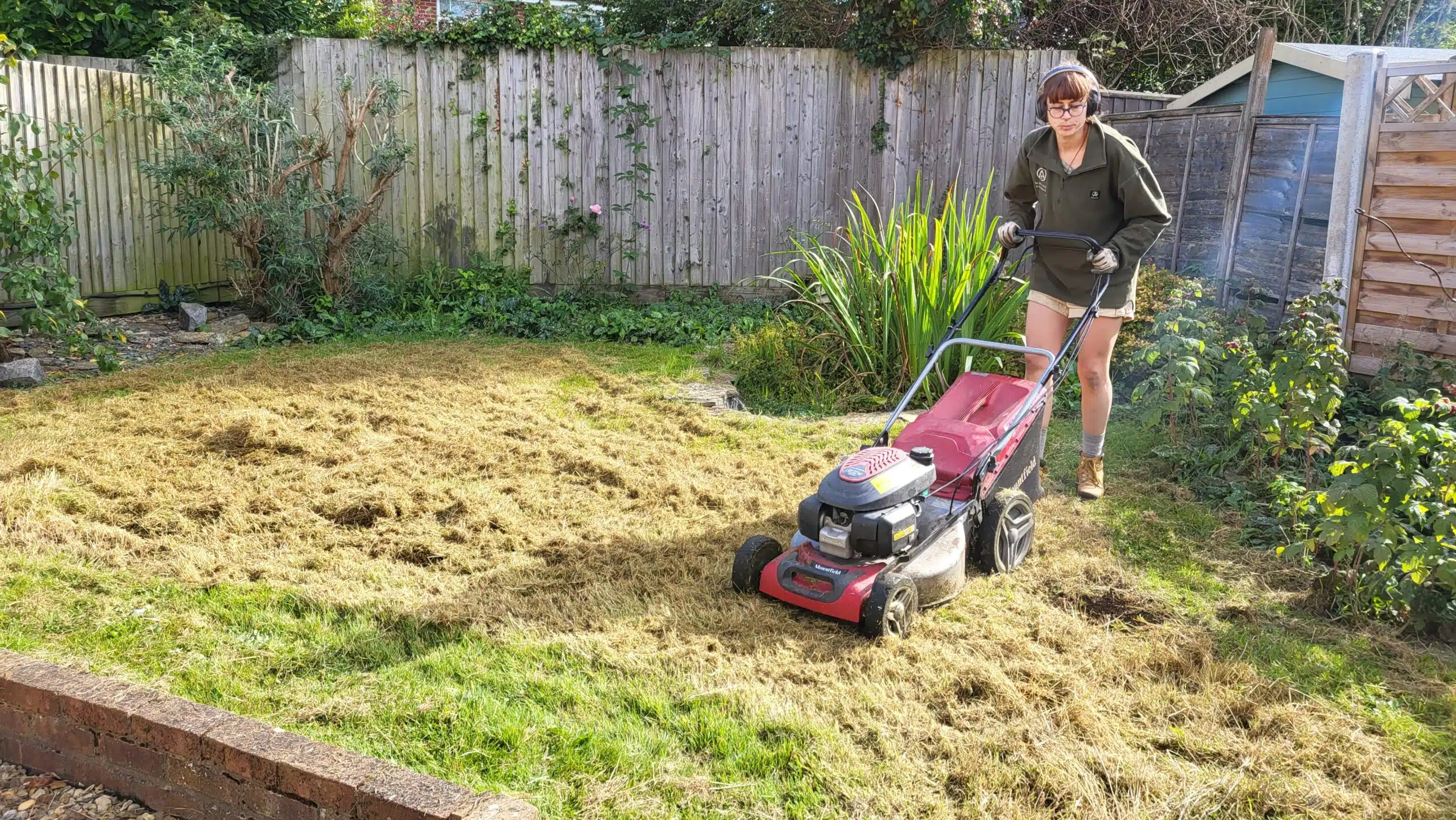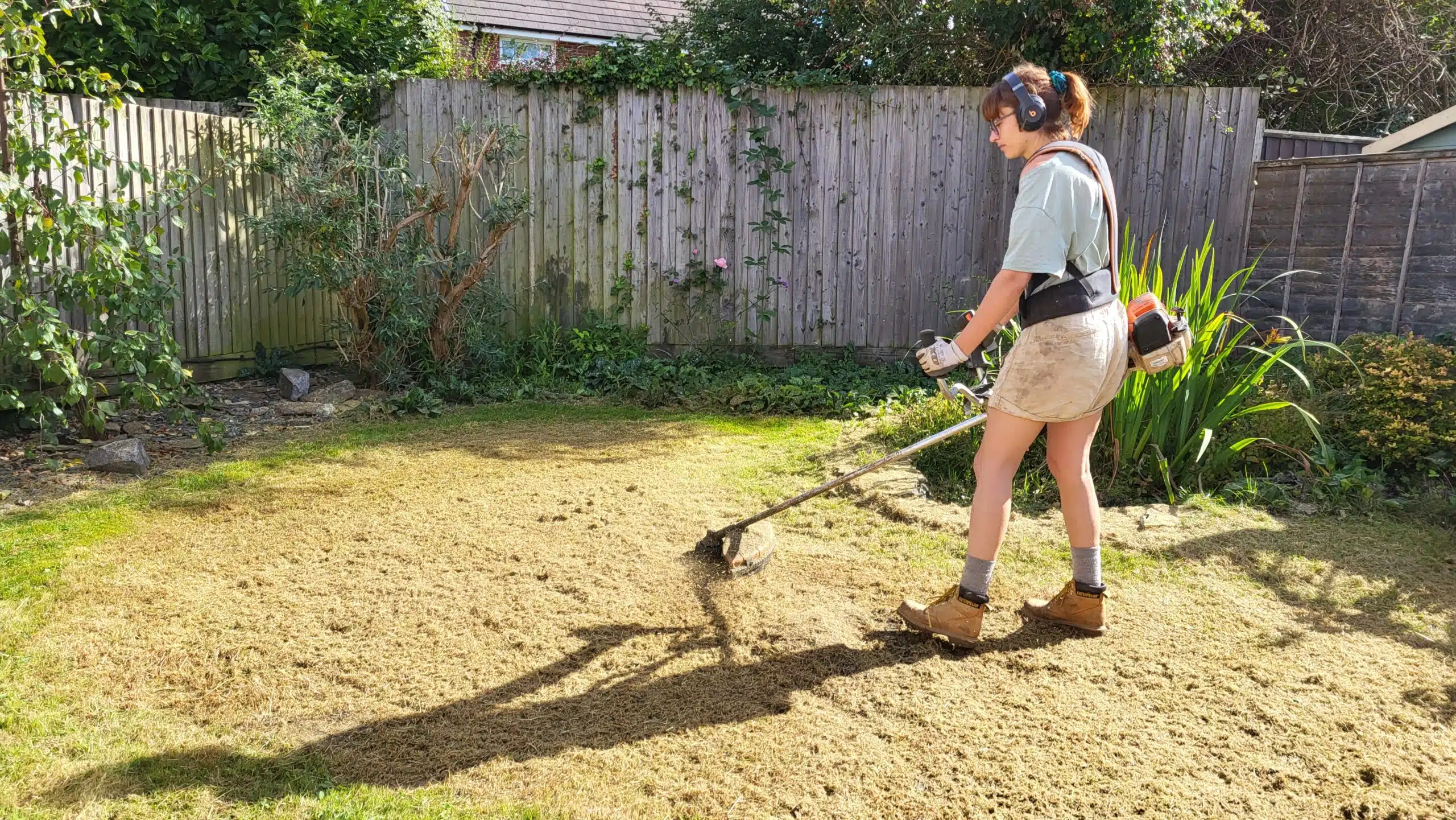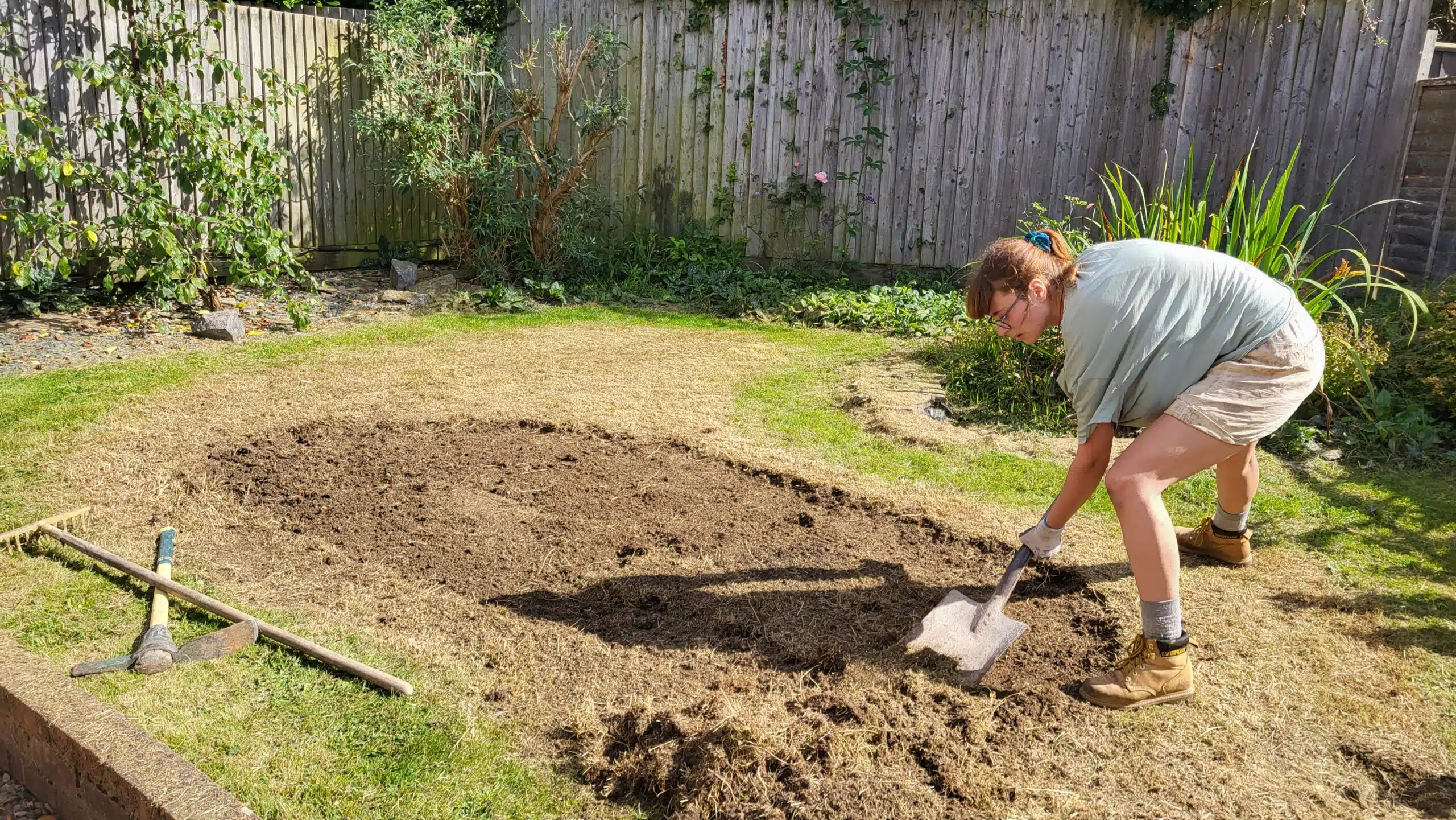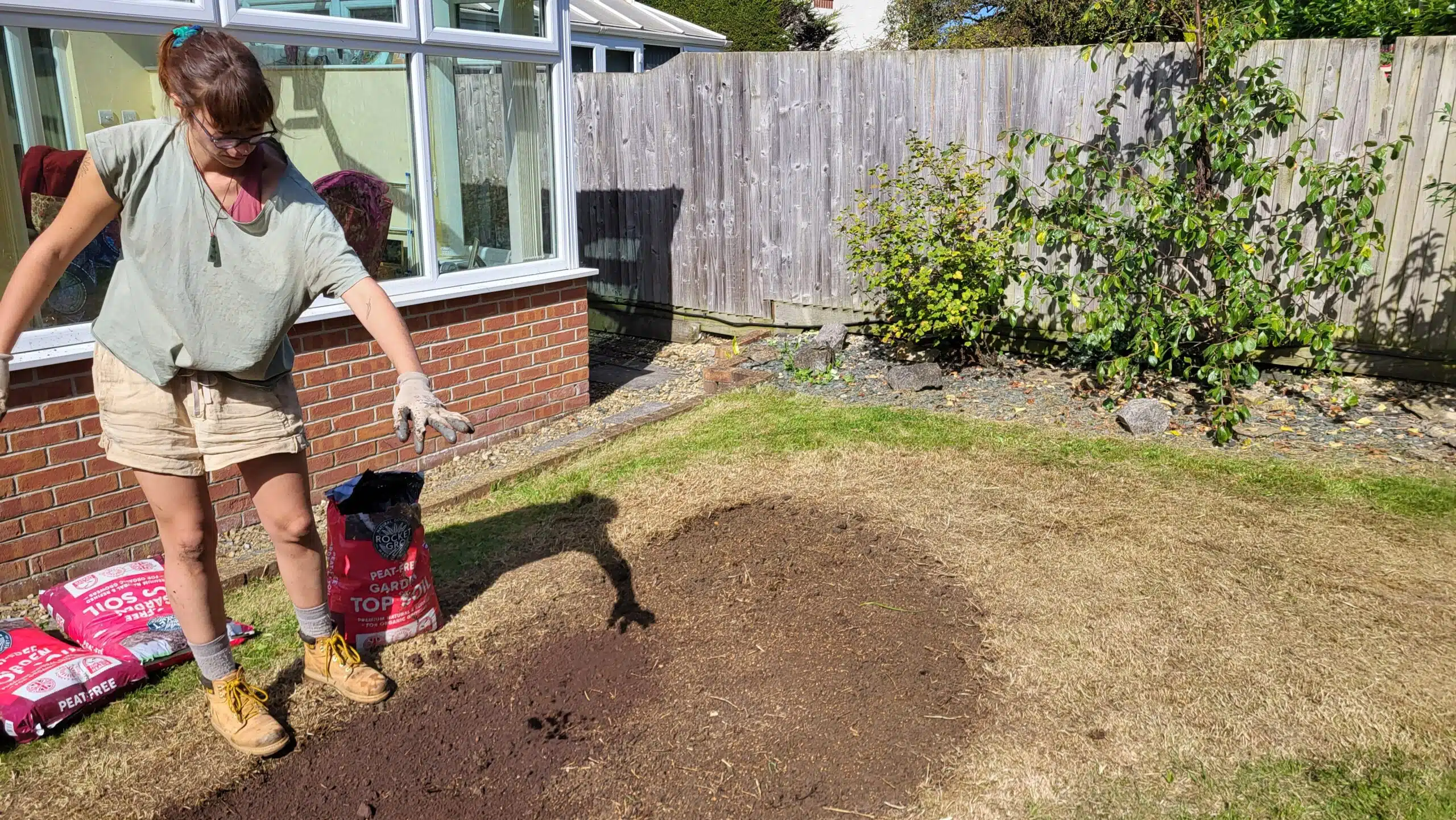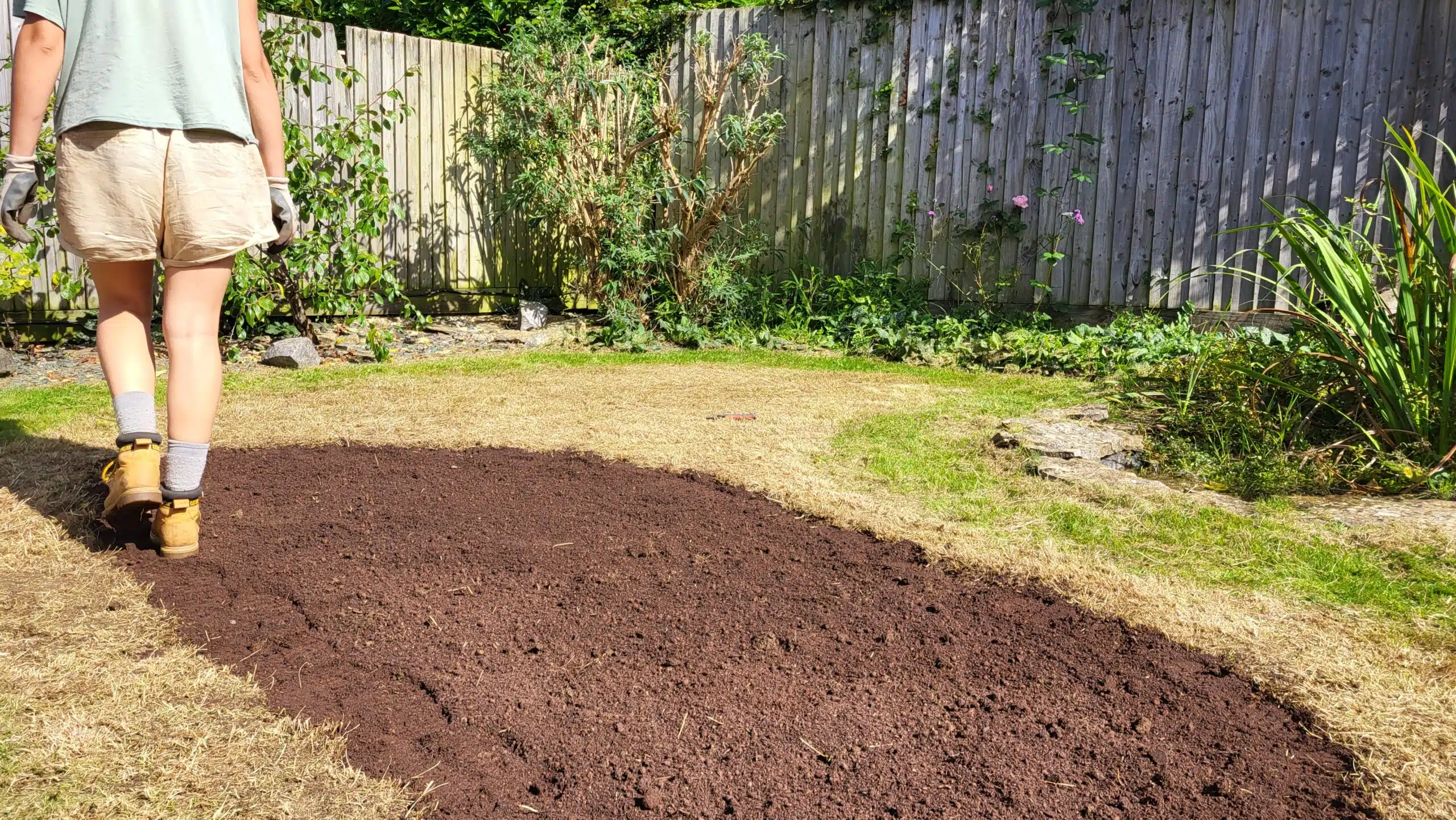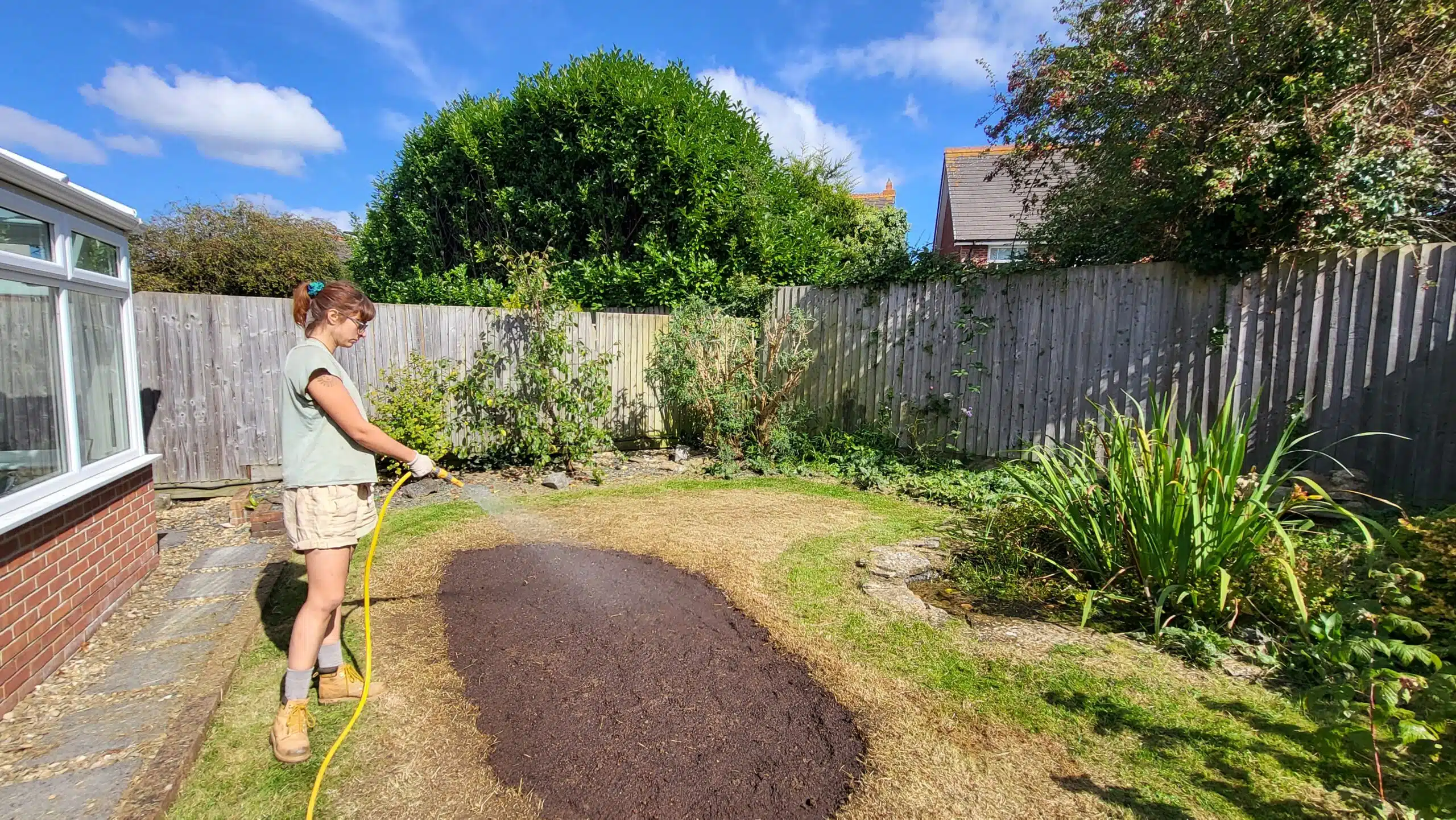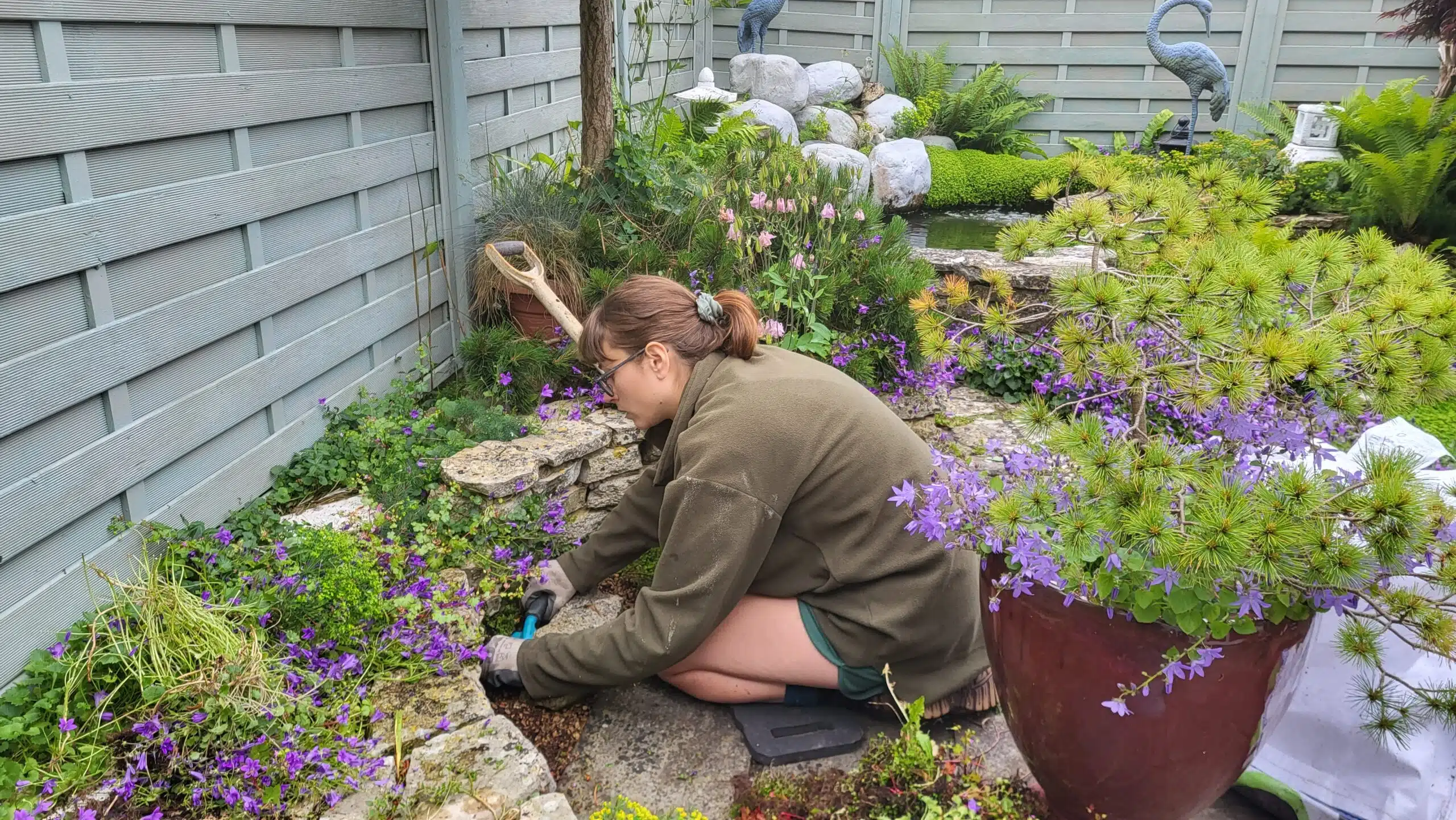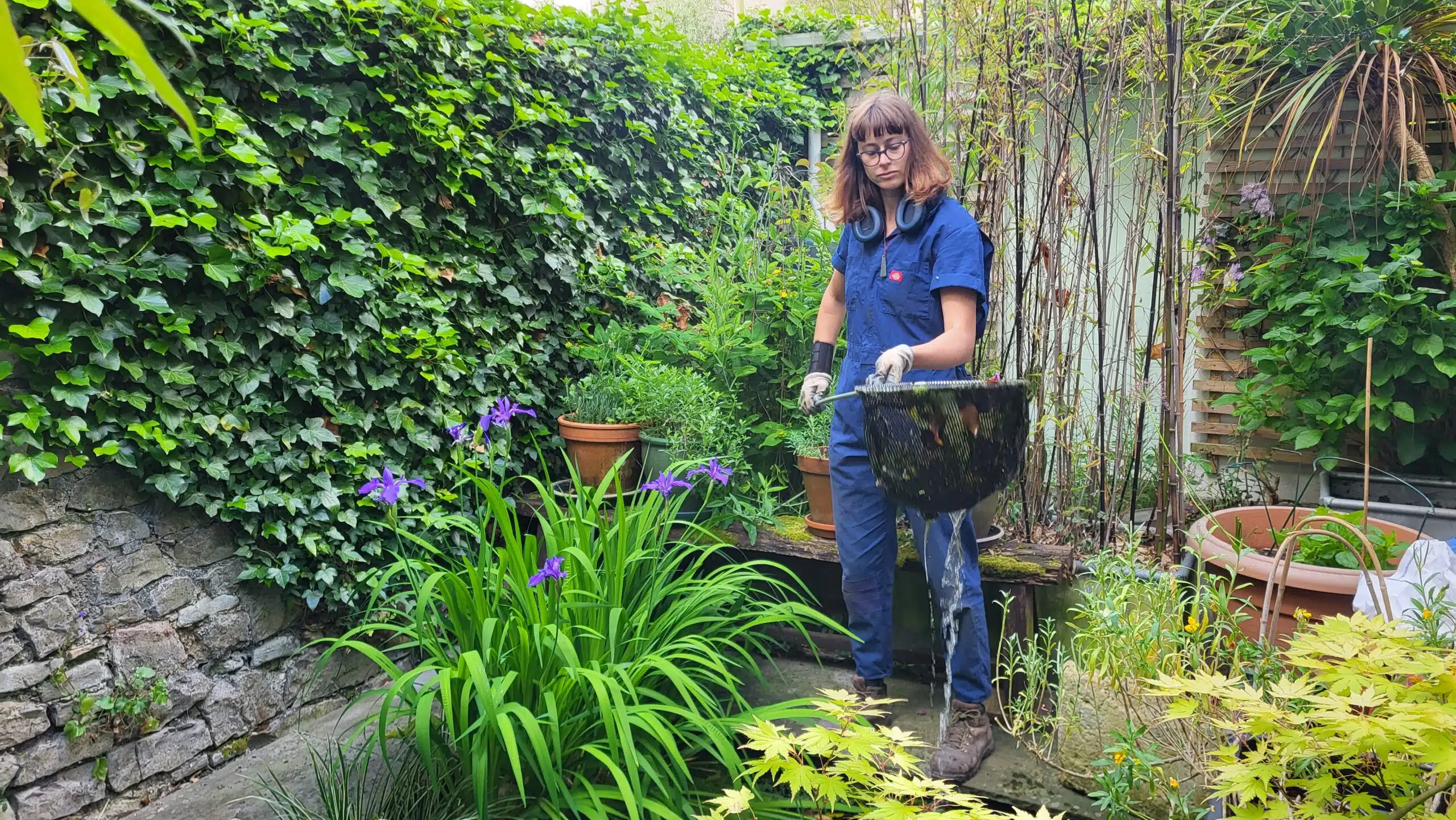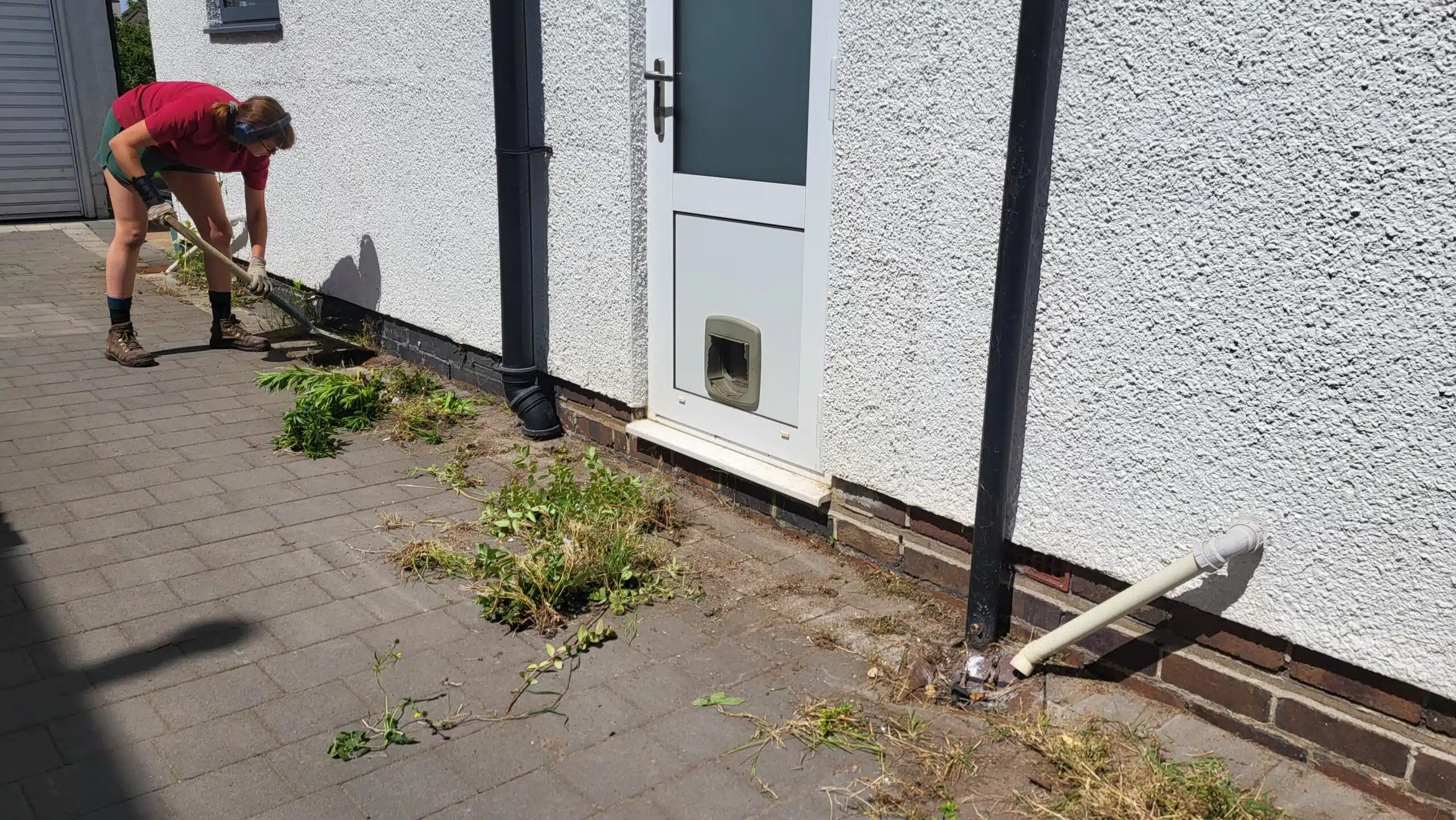Since heavily scarifying and planting native meadow plug plants previously, which wasn’t as successful as we’d hoped, we decided that the ground needed further preparation to enable a better outcome. Therefore, we started by mowing the grass, and then strimmed it as far back as it would go in the middle section of the lawn where we want the Yellow rattle to grow.
As we mowed and strimmed, we ensured that we raked off all the thatch and grass. It was a lovely warm, autumnal day for this project. We’ve left a wider perimeter around the area to be seeded, so that our customer has space to walk around the edge of the garden, to get to the borders and pond.
We then used a mattock, spades and shovel to scalp the majority of the area that we wanted to prepare for seed.
We raked well before sowing the seed over the meadow area.
We scattered the native, Yellow rattle seed by hand over the ground and added a light layer of top soil.
We lightly walked over the area to ensure good contact between the seed and soil. The last thing to do was to water! Although it’s been sunny, rainy times are on the horizon, so this seed bed will get a good watering over the winter, ready for the beautiful flowers to emerge next spring.
Yellow rattle is native to the UK, and will out compete grasses. Other weed seed and grass is bound to blow in here, but hopefully the Yellow rattle will do it’s job to open up this area, so that other wildflower seed can be sown in the next year or two.
By reducing grass growth, yellow rattle allows for a greater variety of wildflowers to flourish, which supports a wider range of insects, birds, and other wildlife. Yellow rattle is the food plant for the larvae of two rare moths, including the grass rivulet. We are looking forward to seeing how this mini meadow does next season.


